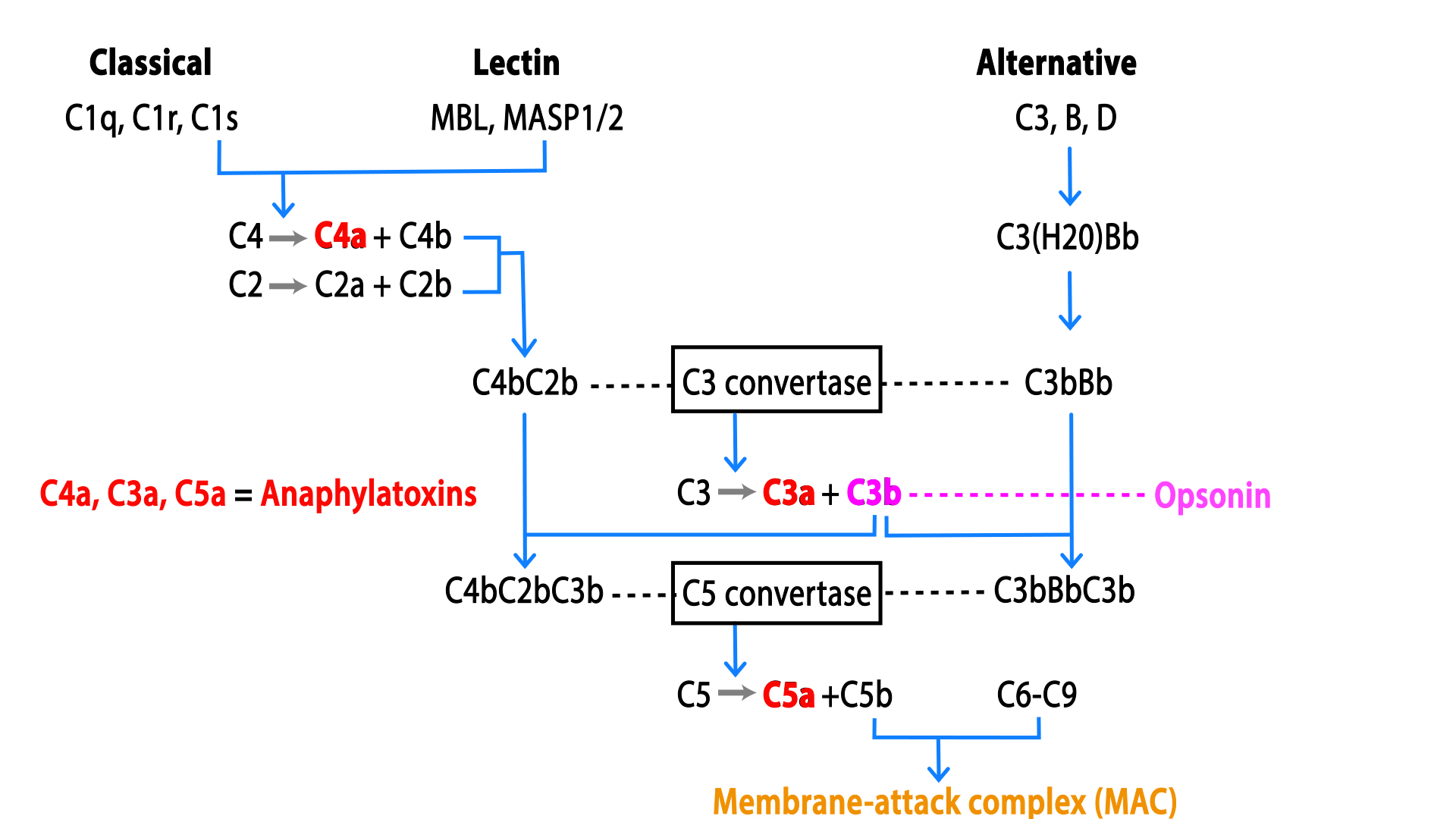The Complement System Explained Clearly
Pathways and Regulation of the Complement System explained in 6 min - It's mind-boggling how simple it is!
This lesson includes an animated video lecture, downloadable images, quiz questions and a PDF
The complement system is one of the major defense mechanisms against infection. It plays a crucial role in the innate immune response. Recent studies suggest that complement activation also plays a role in the adaptive immune defense but the exact mechanisms have yet to be determined.
Complement is a system of plasma proteins that can be activated by pathogens or pathogen-antibody complexes, leading to a chain reaction that produces active molecules to aid in the destruction of pathogens. In other words, it “complements” the immune system, hence the name.
Many of the complement proteins are inactive proteases, called zymogens, which themselves are activated by proteolytic cleavage. This is how one activated protease cleaves and activates the next in the activation cascade.

There are three complement activation pathways: the classical pathway, lectin pathway, and alternative pathway. They are initiated differently, but converge to produce the same set of effector molecules. These include:
- opsonins, which bind to and target pathogens for destruction by phagocytes;
- anaphylatoxins, which activate mast cells and recruit phagocytes to the site of infection;
- and membrane-attack complexes, which directly destroy bacteria.
The components of the classical pathway are labeled C1 to C9, in order of their discovery. This pathway can be activated either by pathogens or pathogen-antibody complexes.
C1 consists of C1q, C1r and C1s.
Subscribe to our "Anatomy and Physiology" course below to continue!
This content is available within the following courses:

Anatomy and Physiology: More than 80 animations, plus downloadable PDFs, downloadable images, and quizzes.

Anatomy and Physiology: More than 80 animations, plus downloadable PDFs, downloadable images, and quizzes.